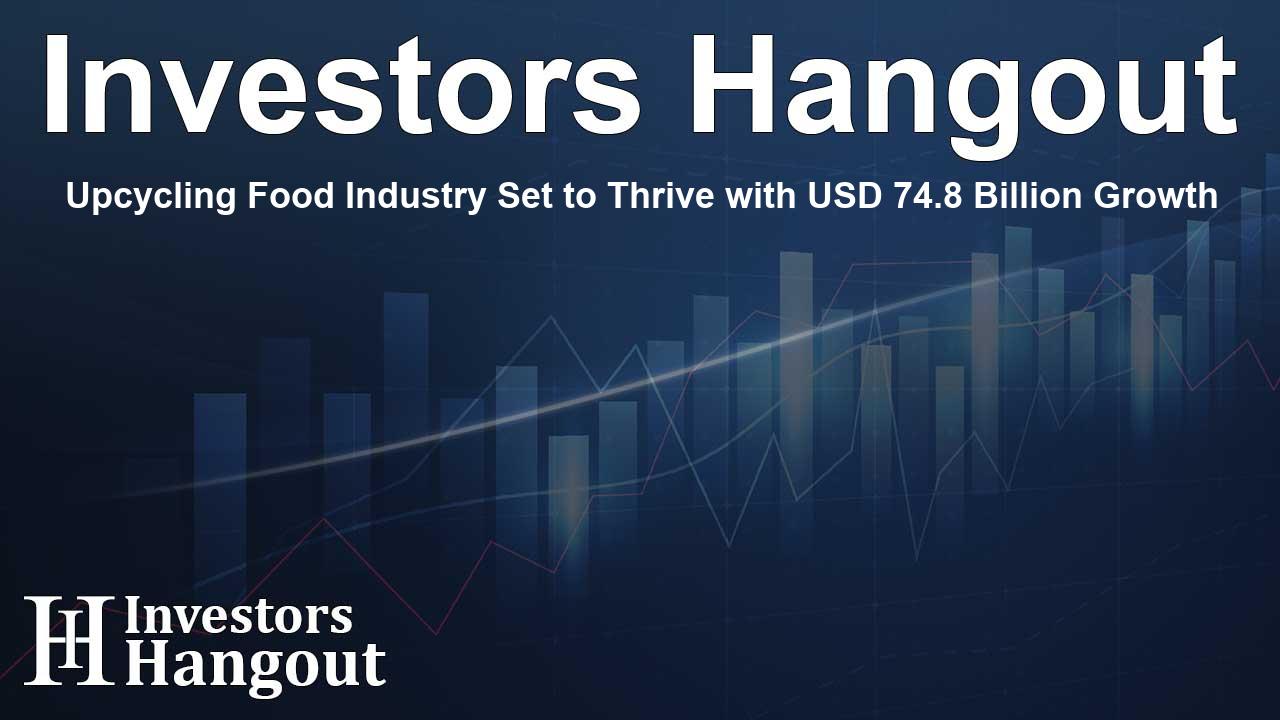Upcycling Food Industry Set to Thrive with USD 74.8 Billion Growth

Upcycled Food Market Overview
The Upcycled Food Market is on a remarkable growth trajectory, projected to reach an impressive USD 74.8 billion by 2029. This exciting forecast highlights the increasing consumer awareness of sustainability and a commitment to reducing food waste. The market, which was valued at USD 54.3 billion in the recent past, promises to expand at a compound annual growth rate (CAGR) of 5.60% over the coming years.
Understanding Upcycled Food
At its core, upcycled food encompasses products created by repurposing ingredients that would otherwise go to waste. This innovative approach not only reduces food waste but also offers numerous economic and environmental benefits. As consumers become more knowledgeable about the environmental impacts of their food choices, the demand for upcycled products continues to rise.
Market Dynamics
The upcycled food industry is influenced by several market drivers. Among the primary drivers is the increasing focus on food waste reduction. Consumers are now more committed to sustainable practices, steering companies toward upcycled food production. Additionally, regulatory support and incentives are also fostering innovation, encouraging businesses to explore upcycling as a viable model.
Challenges within the Market
Despite its promising growth, the upcycled food market faces distinct challenges. Traditional food products still dominate, making competition fierce. Furthermore, innovation limitations and significant research and development costs can hinder growth. Supply chain complexities also pose challenges, and consumer perception continues to be a barrier to widespread acceptance of upcycled products.
Market Opportunities and Innovations
As consumers lean towards sustainable eating habits, opportunities abound for brands that can successfully pivot toward upcycled ingredients. Companies leveraging innovative food technologies can maximize their potential in this burgeoning market. Successful case studies showcasing brands using upcycled inputs will inspire new partnerships and collaborations within the food industry.
Technological Advances
Technological advancements play a crucial role in the evolution of the upcycled food market. Significant innovations include enzyme-assisted extraction, microbial fermentation, and various methods of food processing that enhance the efficiency of upcycling efforts. The integration of artificial intelligence and data analytics is also revolutionizing the industry, allowing for smarter processing techniques.
Sustainability Trends
Sustainability remains a key focus for the upcycled food sector. Adopting circular packaging and innovating in areas such as high-pressure processing and flash freezing technology underpins the industry's move towards eco-friendliness. Brands that prioritize sustainability are likely to achieve higher consumer acceptance and loyalty, effectively establishing strong market positions.
Regulatory Environment and Global Impact
The regulatory landscape governing upcycled foods spans multiple regions, from North America to Europe and beyond. Each region presents unique challenges and incentives that can either support or hinder market growth. For instance, diverse regulations in countries can impact everything from ingredient sourcing to manufacturing processes, influencing how companies adapt their strategies.
Competitive Landscape
The competitive landscape in the upcycled food market is dynamic. Leading companies are actively diversifying their product lines and aligning their business practices with sustainability trends to enhance market credibility. Strategic alliances and mergers are common as businesses seek to bolster their market position and drive growth through innovation.
Frequently Asked Questions
What is the projected growth rate of the upcycled food market?
The upcycled food market is expected to grow at a CAGR of 5.60%, reaching USD 74.8 billion by 2029.
What are some challenges faced by the upcycled food industry?
Challenges include competition from traditional food products, high R&D costs, supply chain complexities, and consumer perception issues.
How does technology contribute to the upcycled food market?
Technology such as enzyme-assisted extraction and AI analytics enhances efficiency in processing upcycled food, driving innovation.
What sustainability trends are influencing the upcycled food market?
Trends include adopting circular packaging, sustainable sourcing practices, and ensuring eco-friendly manufacturing processes.
Why is consumer awareness important for the upcycled food market?
Increased consumer awareness about sustainability and food waste drives demand for upcycled products, boosting market growth.
About The Author
Contact Owen Jenkins privately here. Or send an email with ATTN: Owen Jenkins as the subject to contact@investorshangout.com.
About Investors Hangout
Investors Hangout is a leading online stock forum for financial discussion and learning, offering a wide range of free tools and resources. It draws in traders of all levels, who exchange market knowledge, investigate trading tactics, and keep an eye on industry developments in real time. Featuring financial articles, stock message boards, quotes, charts, company profiles, and live news updates. Through cooperative learning and a wealth of informational resources, it helps users from novices creating their first portfolios to experts honing their techniques. Join Investors Hangout today: https://investorshangout.com/
The content of this article is based on factual, publicly available information and does not represent legal, financial, or investment advice. Investors Hangout does not offer financial advice, and the author is not a licensed financial advisor. Consult a qualified advisor before making any financial or investment decisions based on this article. This article should not be considered advice to purchase, sell, or hold any securities or other investments. If any of the material provided here is inaccurate, please contact us for corrections.
